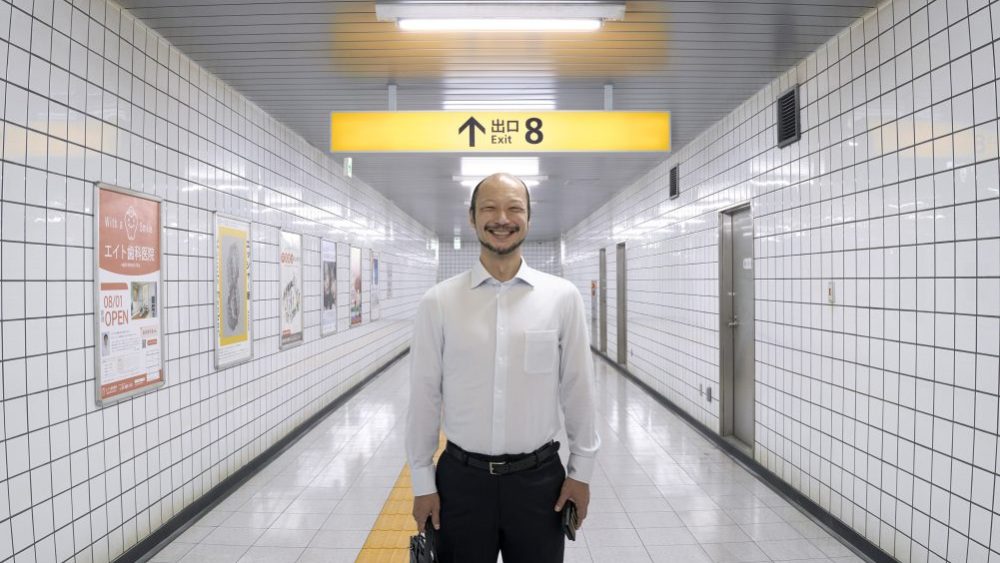A Man Is Lost in a Maze in a Witty Game Adaptation
Given how few first-person videogames make a successful transition to the big screen, it’s surprising how easy Genki Kawamura‘s “Exit 8” makes it look. But perhaps the key to not losing much in translation is not having much to lose in the first place. The concept of popular walking game “The Exit 8,” from developers Kotake Create, is so spartan as to be practically monastic. You are lost in a labyrinthine, overlit, Japanese metro tunnel, and the only way to find your way out of its Escher-like infinity-loop construction is to spot its “anomalies” — tiny, deliberate deviations from the previously established norm.
While comparisons to cult sci-fi “Cube” are inevitable, “Exit 8” is simpler, cleaner and less bothered by reasoning out the premise. Instead, the trick here is that, absent the first-person dimension, Kawamura and co-writer Kentaro Hirase add a psychological component to the third-person storytelling. Here, the protagonist’s predicament is cued by his being at a turning point in his life, or rather, because this is “Exit 8,” a turning and turning and turning again point.
Our hero, only ever referred to as the Lost Man (J-pop star Kazunari Ninomiya in a nicely judged rumpled-everyman performance), is on the train when he witnesses an overbearing businessman harassing a young mother about her crying baby and fails to intervene. Soon after, he alights and takes a call from his ex, who is pregnant and awaiting his thoughts on what to do about it. So he’s plunged into worry, and it takes him a while to notice that suddenly he’s alone in a rectilinear nightmare of white-tiled underground passageways, courtesy of Ryo Sugimoto’s sadistically sharp production design, and that following the bland yellow signage toward the exit will eventually always end him up back where he began.
Actually, Lost Man is not quite alone; a slender man carrying a briefcase (Yamato Kochi) walks impassively by him at the same moment each time he arrives in one of the corridors. And later, other wanderers also appear, but his interactions with them are stilted, as though they are non-playing characters (NPCs). As in the game, the only active choice the Lost Man can make, therefore, is to move forward or double back, and soon a poster appears telling him how to exercise that limited free will. Whenever he spots an anomaly, he should reverse course. If nothing’s amiss, he should continue, and this way he will successfully navigate the eight levels and make it to an actual exit. Get it wrong, however, and it resets back to the start and all his progress is undone.
Operating on the same catchy principle that drives a thousand hidden-object or spot-the-difference games, now we, along with the Lost Man, start to obsessively parse each frame for potential deviations. Were the subway posters in that same order last time? Did that door always sit between two air vents? Why is Walking Man suddenly Standing Man, and when did he start wearing that ghastly smile?
There is a matter-of-factness to DP Keisuke Imamura’s flat, bright images that creates a hyperreal eeriness all the more uneasy for being the polar opposite of a horror movie’s usual dark corners and shadowy depths. And editor Sakura Seya does a briskly efficient job of making the metro-corridor Moebius strip feel not only plausible, but solidly real, with only some later developments allowing for any variation in shot style or rhythm.
But at just the point when we might be starting to get a little restless with Lost Man’s erratic progress, Kawamura makes his most daring narrative leap by suddenly switching protagonists — perhaps all those NPCs were not actually NPCs at all, but other “players” trapped in the same psychological and physical limbo for different, uniquely personal reasons. All those reasons, however, have a moral or ethical dimension, which in some cases leads to quite touching developments that in their way further illuminate Lost Man’s own quandary.
That’s not to overstate the depth or emotive nature of a fun little ride that uses broad-brush psychology as an excuse for an elegant puzzle-box that, once solved, does not require further thought. Like the game, which is popular as kind of a one-off without much replayability, “Exit 8” is designed to divert for a short time and does so enjoyably, with Kawamura proving a most judicious assessor of just how little backstory, plot explanation and character development he can get away with and still keep us engaged. But while it doesn’t pretend to some grand philosophy, the movie’s sparseness does give it some mileage as an allegory for how changing things up is the only way to break a cycle of destructive, circular thinking. In a time of increasingly inescapable groupthink and conformity, “Exit 8” wants you to embrace the anomaly.

